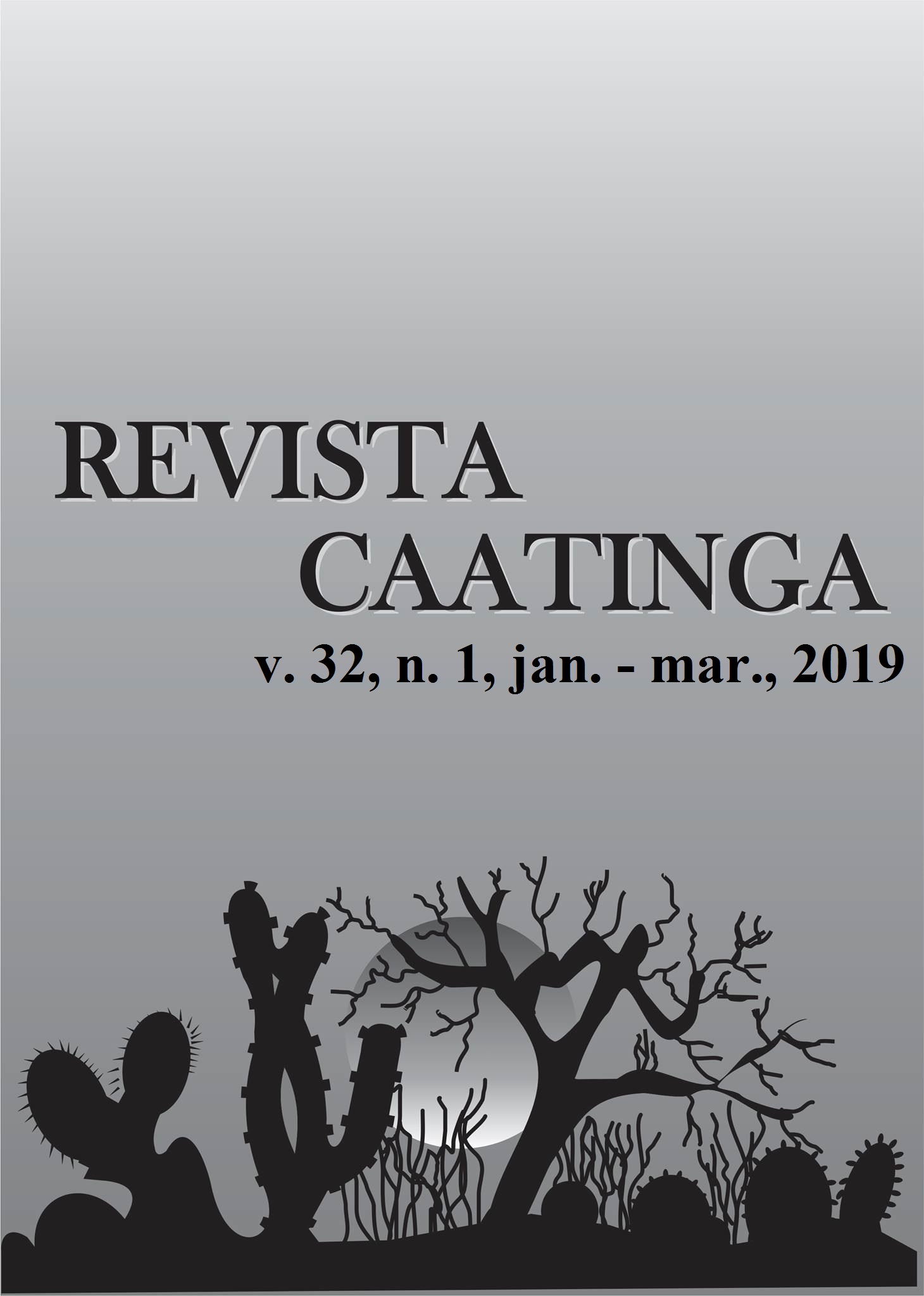GENETIC DIVERSITY AMONG AND WITHIN BRAVE BEAN (Capparis flexuosa L.) POPULATIONS ASSESSED USING RAPD MARKERS
DOI:
https://doi.org/10.1590/1983-21252019v32n109rcKeywords:
Biotechnology. Caatinga. Molecular marker. Species conservation.Abstract
Brave bean (Capparis flexuosa L.) is a Caatinga species that is used as forage, mainly during the dry season when some plant species lose their leaves. The aim of this study was to assess genetic diversity within and among brave bean populations using Random Amplified Polymorphic DNA (RAPD) markers. Brave bean leaves were collected from 30 accessions in the following municipalities of Paraíba state, Brazil: Barra de Santa Rosa (BSR), Cuité (C), São João do Cariri (SJC), Damião (D), Baraúna (B), and Picuí (P). DNA extraction followed the standard methodology of CTAB with modifications. RAPD analyses were carried out using 18 primers, and polymorphism of the amplified DNA fragments was visualized using agarose gel electrophoresis. Data were used to calculate Jaccard Similarity Coefficient values, which were then used to group samples with the Unweighted Pair Group Method with Arithmetic Mean. Cophenetic Correlation Coefficient, Stress, and Distortion Coefficient values were also calculated from these analyses. Band polymorphism was generated with 14 primers, but the sampled populations showed low numbers of polymorphic loci (27 in BSR, 18 in C, 7 in SJC, 9 in D, and 0 in B and P). The highest polymorphic information content was found in samples from the BSR (9 groups), C (22 groups), SJC (7 groups), and D (6 groups) municipalities. In the interpopulation analysis, 34 groups were formed, the matrices of which showed high cophenetic correlations (0.95 to 0.98), but low stress (12.9 to 17.45%) and distortion (3.05%). Therefore, results showed that there was genetic variability both among and within brave bean populations.
Downloads
Downloads
Published
Issue
Section
License
Os Autores que publicam na Revista Caatinga concordam com os seguintes termos:
a) Os Autores mantêm os direitos autorais e concedem à revista o direito de primeira publicação, com o trabalho simultaneamente licenciado sob a Licença Creative Commons do tipo atribuição CC-BY, para todo o conteúdo do periódico, exceto onde estiver identificado, que permite o compartilhamento do trabalho com reconhecimento da autoria e publicação inicial nesta revista, sem fins comerciais.
b) Os Autores têm autorização para distribuição não-exclusiva da versão do trabalho publicada nesta revista (ex.: publicar em repositório institucional ou como capítulo de livro), com reconhecimento de autoria e publicação inicial nesta revista.
c) Os Autores têm permissão e são estimulados a publicar e distribuir seu trabalho online (ex.: em repositórios institucionais ou na sua página pessoal) a qualquer ponto antes ou durante o processo editorial, já que isso pode gerar alterações produtivas, bem como aumentar o impacto e a citação do trabalho publicado (Veja O Efeito do Acesso Livre).







